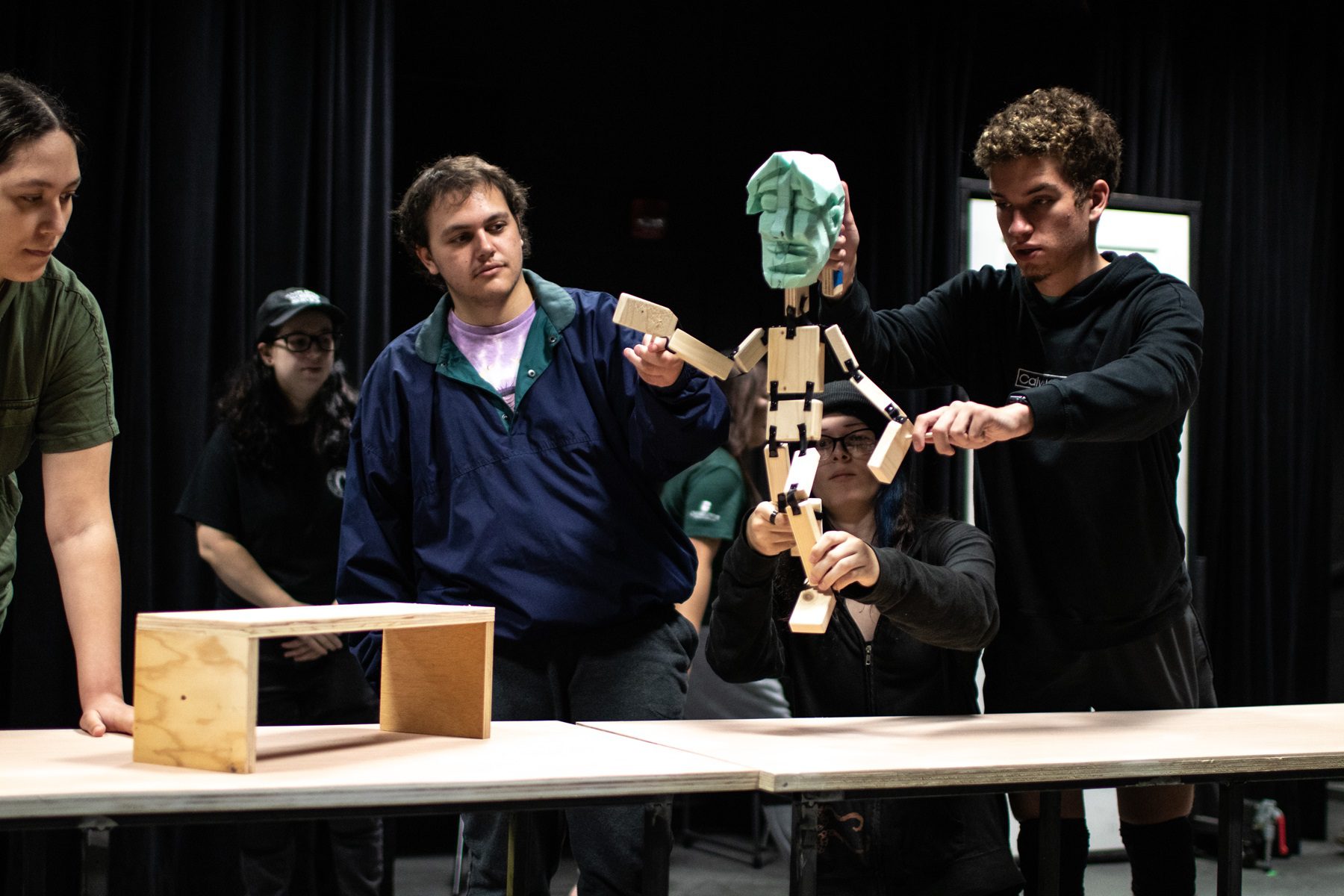Silent Horror Film Gets a Puppet Remake
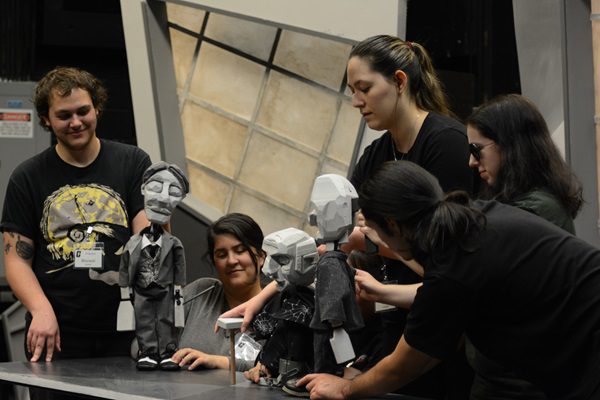
On November 2, the Department of Theatre debuts The Caligari Project, bringing puppets to the Black Box Theater for the department’s most distinctive production of the year, written, designed, and directed by Tom Burch. It has been more than five years since Burch, associate professor of scenic design, taught a puppetry class in the Department of Theatre. In February 2018, students helped create puppets for a production of The Long Christmas Ride Home, by Paula Vogel (pictured below).
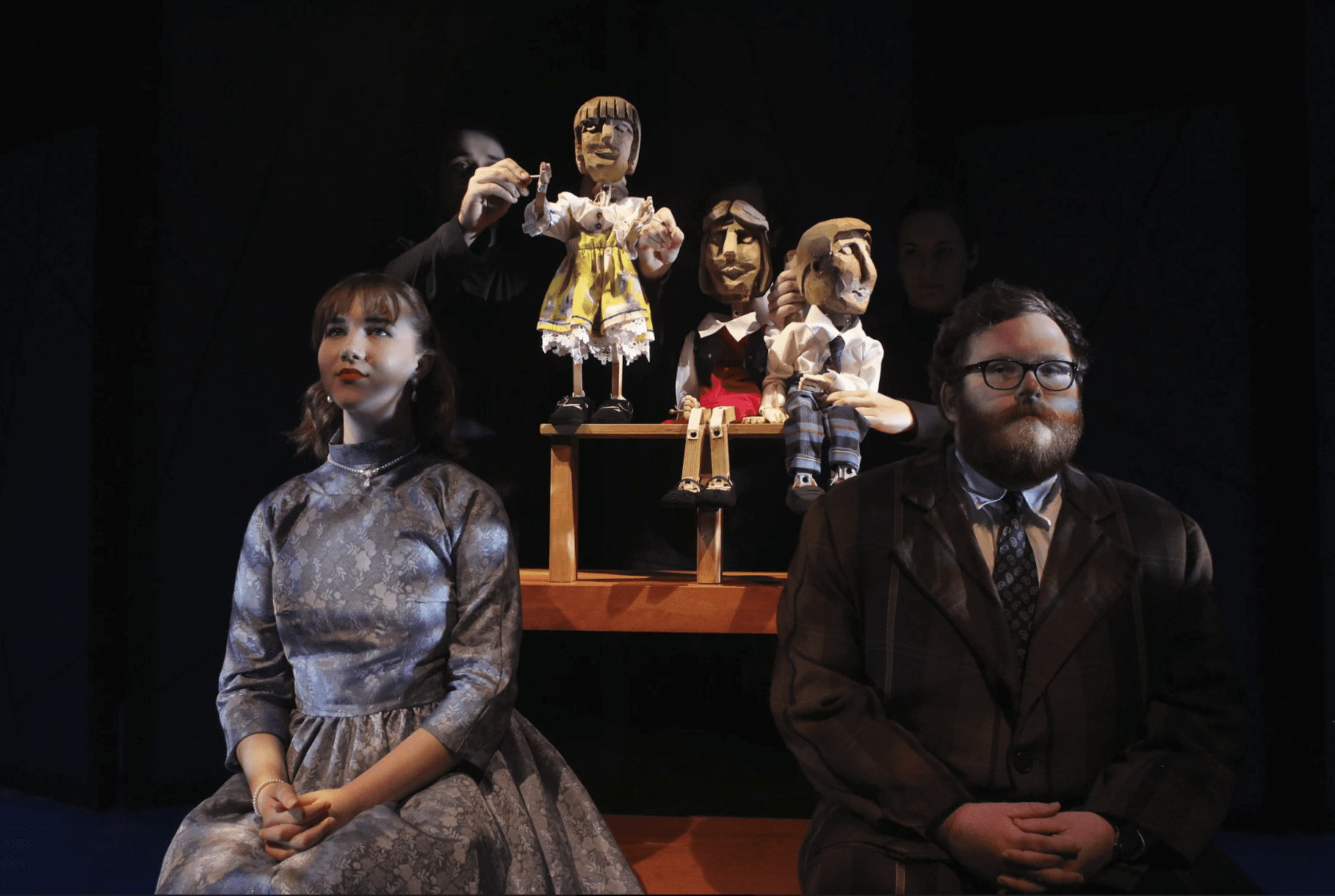
Since that production, Burch, who studied puppetry in graduate school at Northwestern University, participated in the 2020 National Puppetry Conference hosted by the Eugene O’Neill Theatre Center and led by Artistic Director Pam Arciero, a principal puppeteer with Sesame Street. Meanwhile, he has continued to design outstanding sets for a wide range of productions, from Children’s Theatre of Charlotte’s Allie Kazan and the Magic Mansion (below) to the opera Don Giovanni for La Musical Lirica.
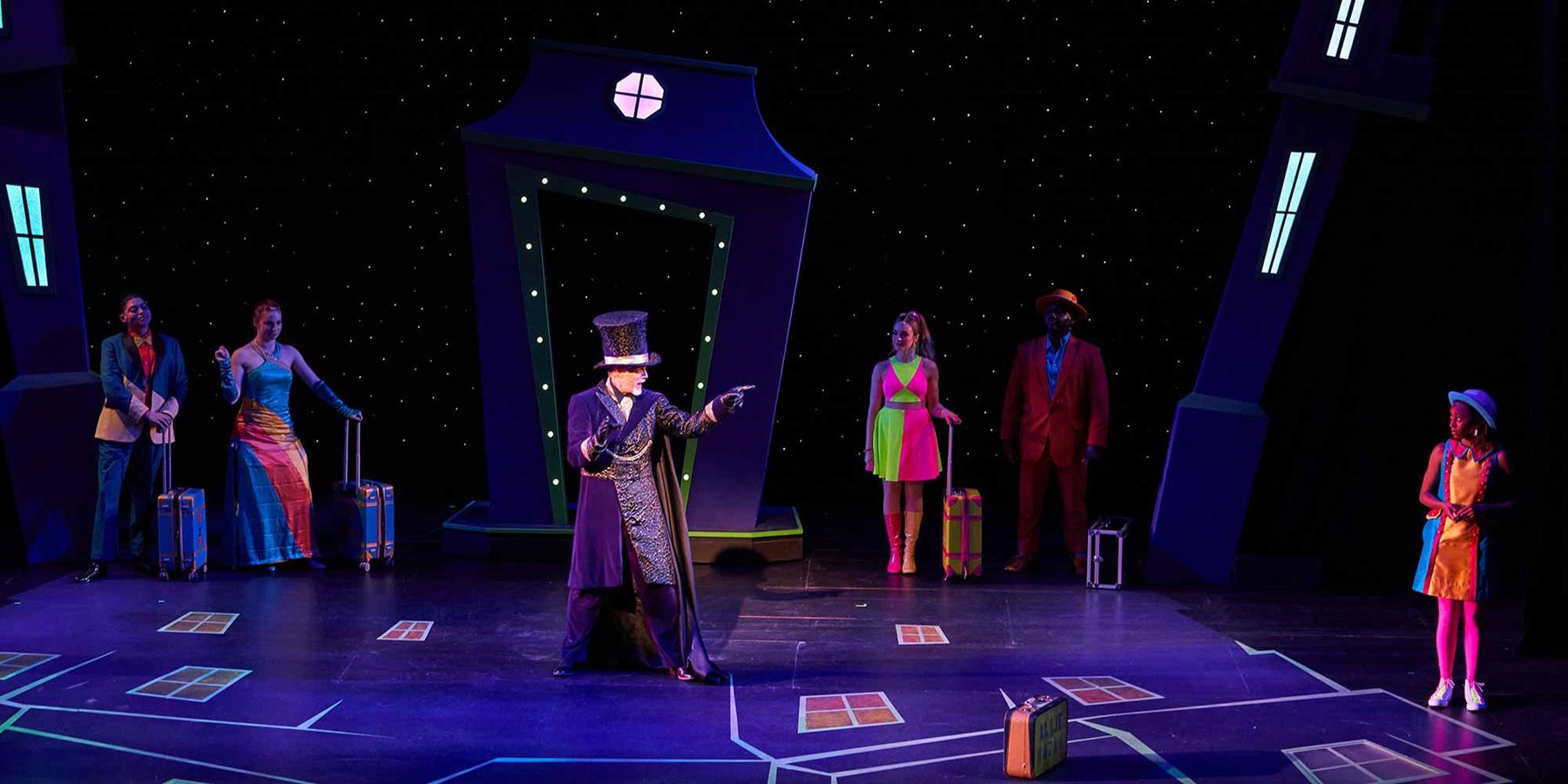
This fall, Burch revived his puppetry class and embarked on a quirky reimagining of a cult classic, the German Expressionist film The Cabinet of Dr. Caligari. Originally created in 1920, the silent film is often credited as the first horror film.
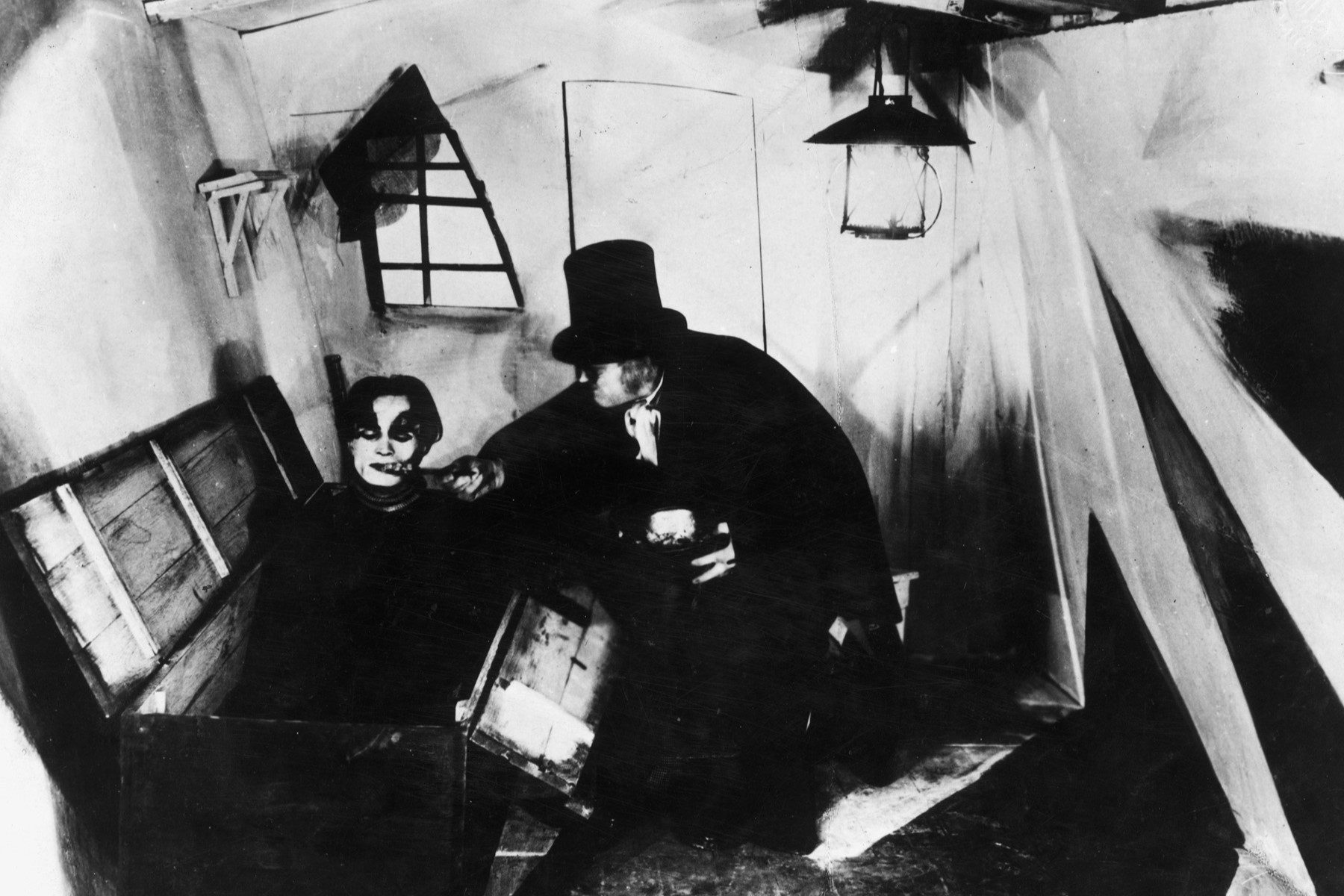
Burch began designing the puppets for his Caligari Project over the summer, turning to the project in earnest once the fall semester began. Meeting for three hours each Friday, the 12 students in the puppetry class learned how to give wooden puppets lifelike movements and melodramatic emotions.
While most of the students in the puppetry class are theatre majors, two – Jacob Scannell and Diego Milner – are majoring in architecture.
“This is my first time interacting with the theatre department and it has been very insightful,” said Milner (pictured below, left). “I enjoy learning about all of the behind-the-scenes work that makes a play work. I find the interdepartment workings between lighting, voice acting, directing, and costume/shop fabrication very interesting and inspiring as I learn about how productions move from imagination to reality.”
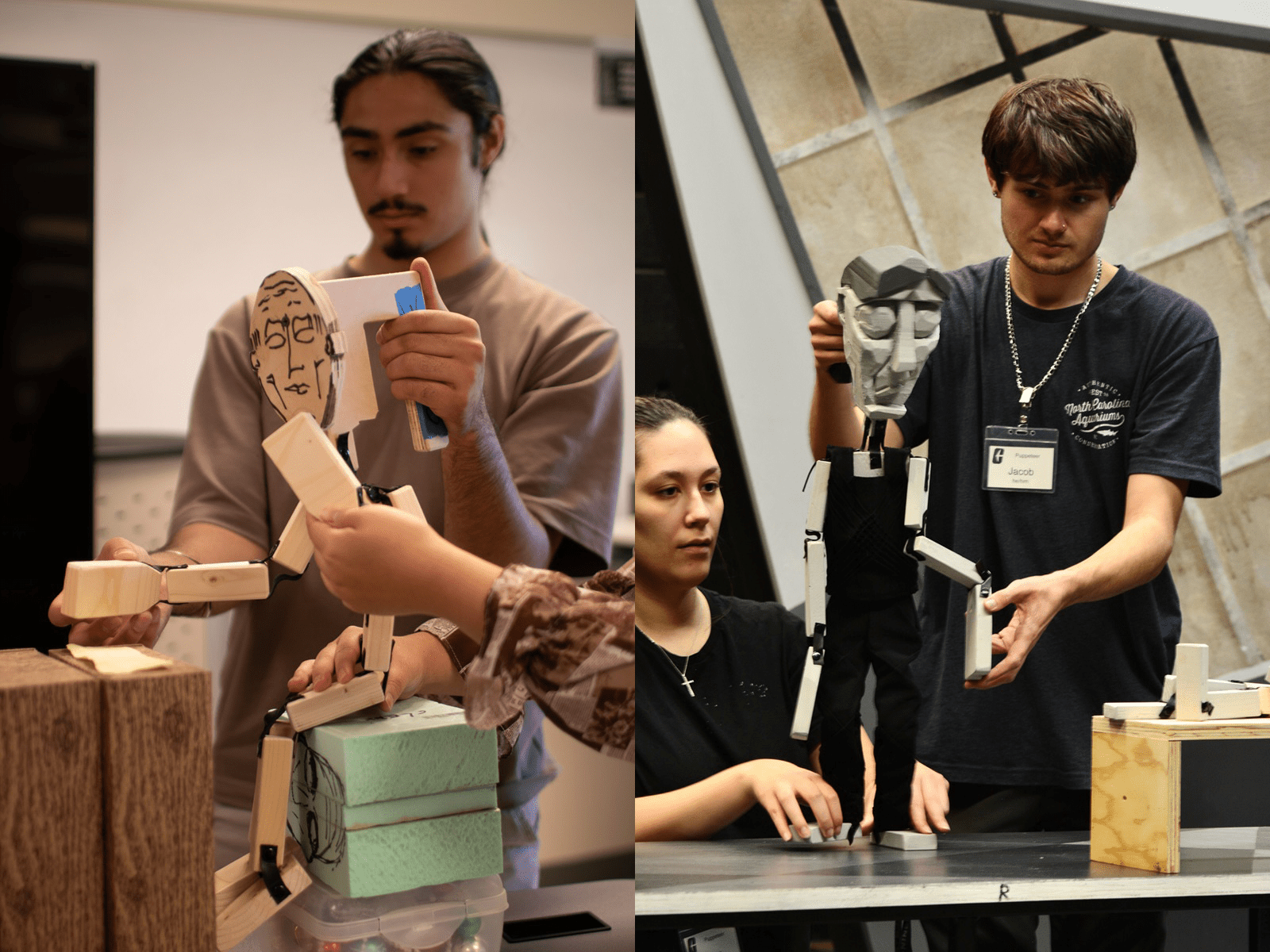
“From an architectural point of view the class is very interesting,” said Scannell (pictured above, right). “Obviously, some of the similarities became obvious with set building vs. model making, and the reach for perfection shows preparation is key. The organization of the productions is very precise and to a point, it helps build time management and repetition skills, which are constantly used in architecture. The artistic design and creativity side has definitely helped me branch out from ideas in architecture and try to bring more physical life to my projects.”
Burch also enlisted the help of junior theatre major Adrian Ewens as costume designer.
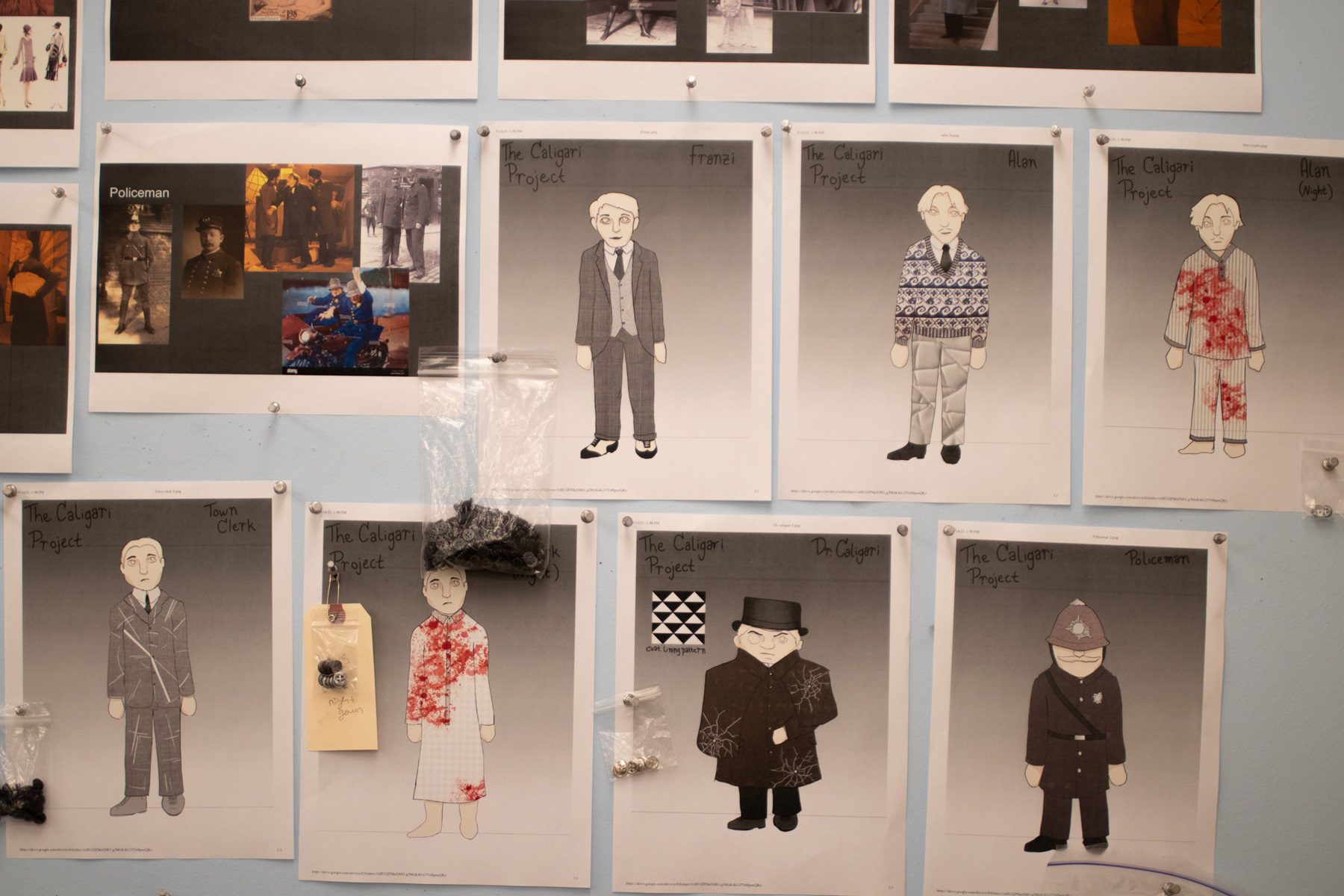
“The puppets are stylized and don’t have human proportions, but they also don’t really have doll proportions either,” Ewens said. “It means that we can’t really buy any of the clothes; they all have to be made from scratch. So I get a lot more freedom in what I want to do, but it takes more time and effort to get everything done (and I’m so thankful for the costume shop workers who’ve really made all of it come to life!) It’s been really fun and rewarding, and I’m so excited for the show so I can see all the puppets in action!”

Performances run through November 5. Read more about the class and the show in this story in The Charlotte Observer.
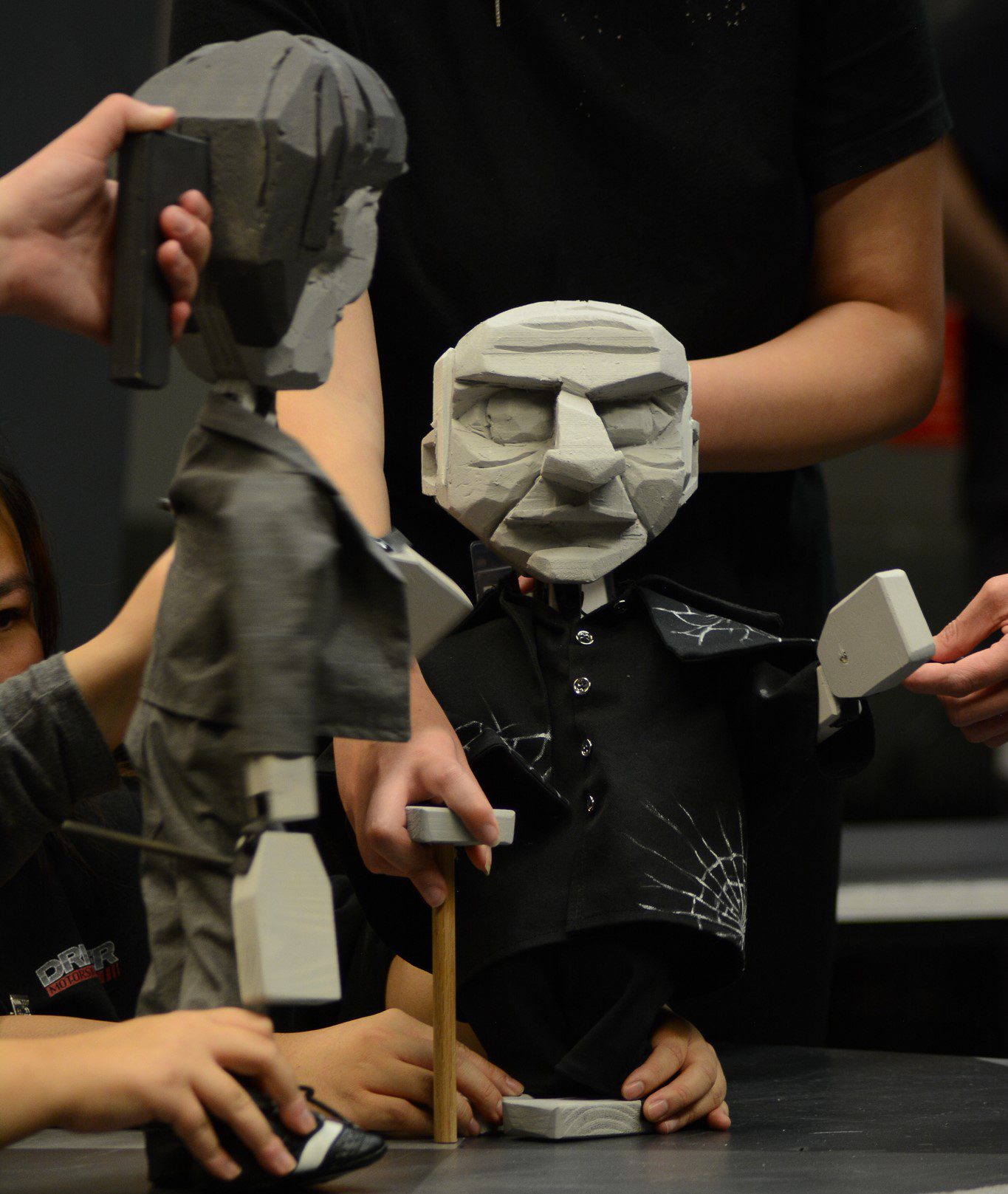
Photos by Zach Allred and Bethany Ivan.
